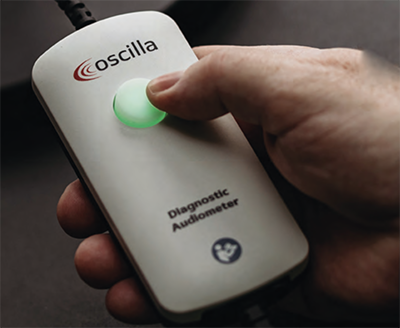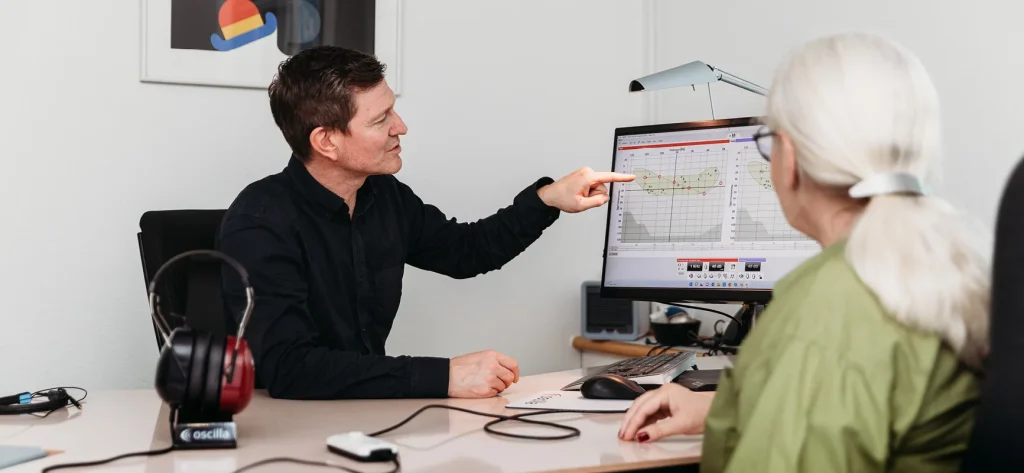On a basic level the principles of hearing tests haven’t changed much since the modern audiogram was invented in the early 20th century.
However, change has certainly occurred, both in the equipment that is used and the things that we are doing to understand different aspects of hearing ability.
Laptop computer
The device that is used to test hearing, the audiometer, has been around for 100 years. But even as recently as the early 1980s an audiometer would fill a large suitcase. The latest mobile testing devices can accommodate this in something the size of a cigarette packet.

Audiometers such as the Natus Oscilla, when attached to a laptop computer, can do everything that traditional testing equipment could do at a fraction of the size.
It’s not just the hardware that is changing. The traditional hearing test is about listening to tones of different frequencies that get quieter and quieter. This is still a very useful test and forms the basis of most hearing evaluations and hearing aid fittings.
Noisy environments
But we all know that the real challenges of hearing loss are not connected with hearing tones in quiet but understanding speech in background noise. That is why we are working to develop tests that are more relevant to the experience of hearing aid wearers.
Around 86% of hearing aid users complain they struggle to hear and understand what people are saying in noisy environments. For more than a century, hearing aids have been fitted based on the pure tone audiogram.
Robust data
Tests such as ACT (Audible Contrast Threshold Test) use speech-like sounds to simulate real-world listening situations. ACT uses a contrasting stimulus which is non-language based.
This means that for the first time in history we can measure your hearing-in-noise ability in less than two minutes with one standardised test that provides a robust assessment that reflects real-world hearing ability.
Hearing aid technology has evolved at a rapid pace over recent years. But we have still been reliant on traditional hearing tests to programme and fine-tune these sophisticated devices.
Now this has started to change. If you have a hearing test over the coming months look out for this new technology that will start to make an impact on how hearing aids are fitted in clinics across the world.


